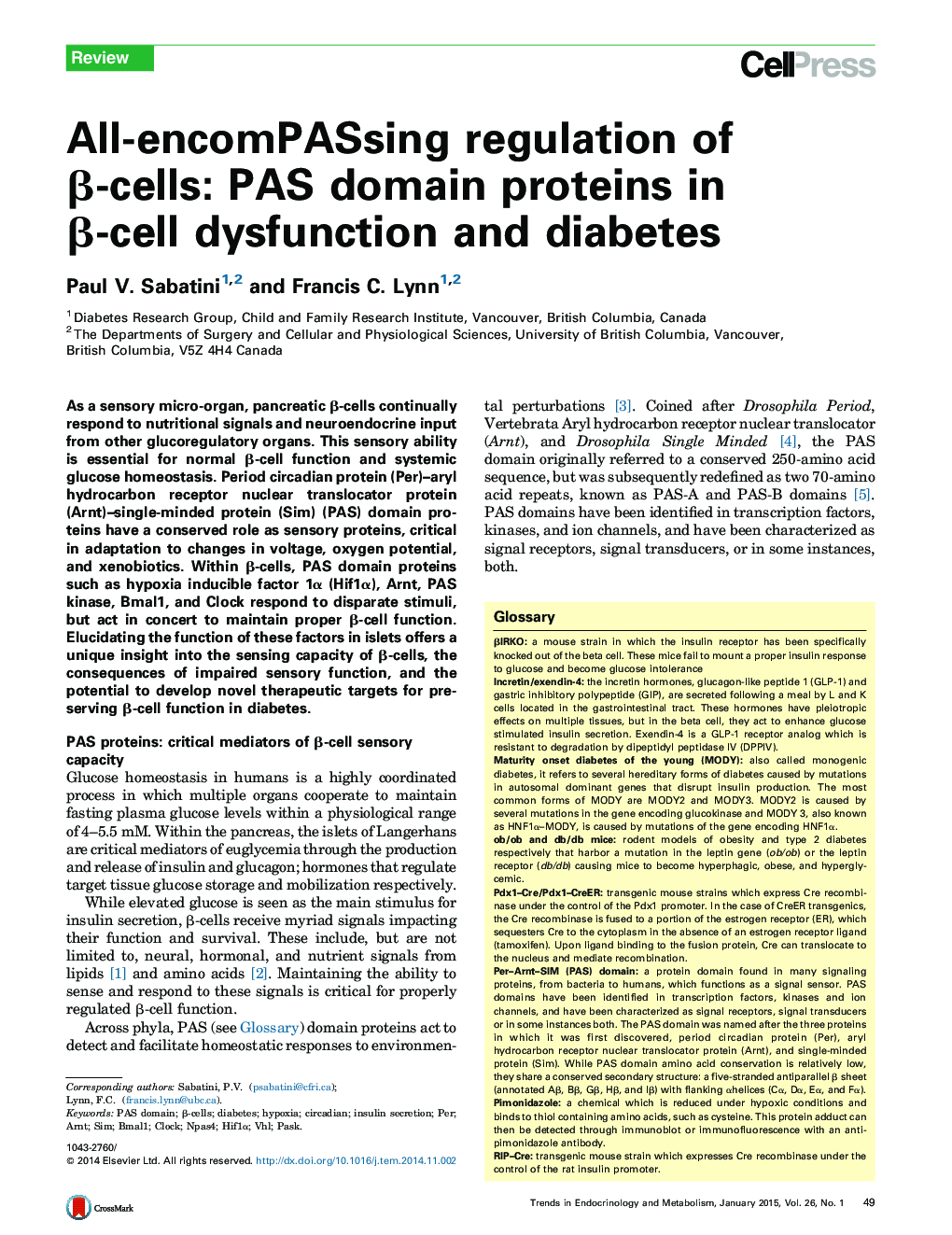| Article ID | Journal | Published Year | Pages | File Type |
|---|---|---|---|---|
| 2810297 | Trends in Endocrinology & Metabolism | 2015 | 9 Pages |
•Many Per-Arnt-Sim (PAS) proteins are present in β-cells and some are dysregulated in diabetes.•The Hif1α pathway regulates β-cell differentiation possibly through altering metabolism.•Arnt regulates insulin secretion through heterodimerization with multiple bHLH-PAS factors.•Pask may play important roles in regulating both α- and β-cell function.
As a sensory micro-organ, pancreatic β-cells continually respond to nutritional signals and neuroendocrine input from other glucoregulatory organs. This sensory ability is essential for normal β-cell function and systemic glucose homeostasis. Period circadian protein (Per)–aryl hydrocarbon receptor nuclear translocator protein (Arnt)–single-minded protein (Sim) (PAS) domain proteins have a conserved role as sensory proteins, critical in adaptation to changes in voltage, oxygen potential, and xenobiotics. Within β-cells, PAS domain proteins such as hypoxia inducible factor 1α (Hif1α), Arnt, PAS kinase, Bmal1, and Clock respond to disparate stimuli, but act in concert to maintain proper β-cell function. Elucidating the function of these factors in islets offers a unique insight into the sensing capacity of β-cells, the consequences of impaired sensory function, and the potential to develop novel therapeutic targets for preserving β-cell function in diabetes.
